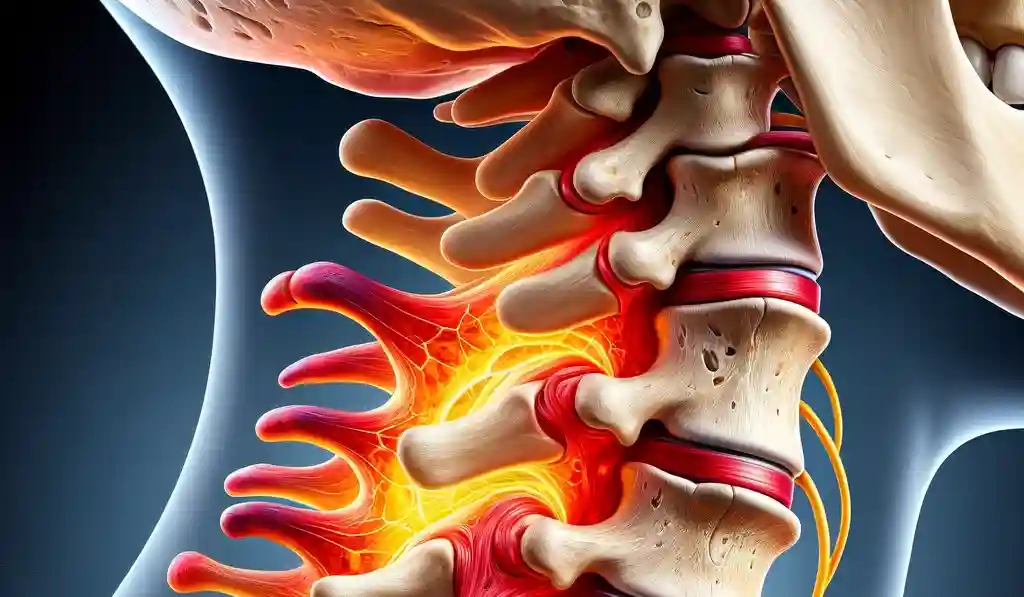Many suffer from back pain brought on by disc bulges. Conditions such as disc protrusions with superimposed force in the central region, disc bulges that abut nerve roots, bulges that are eccentric and paracentral protrusions may cause severe back pain and mobility problems. Understanding these conditions and exploring efficient treatment options is vital to manage pain and improve quality of life. Dr. Ken Nakamura offers insight and suggestions on how to treat these conditions.
What is a disc bulge?
The intervertebral disk which acts as a cushion in between the vertebrae, stretches beyond its normal boundaries, a disc bulge can result. It could be the result of wear and tear, injury or gradual degeneration. The amount of disc bulges vary from minor protrusions accompanied by very little or no symptom, to more serious bulges that could cause discomfort and pain.

Superimposed Central Disc Protrusion
A superimposed central disc protrusion is a specific type of disc bulge that is located in the central part of the spinal canal. According to Dr. Ken Nakamura, this protrusion could result in compression of the spinal cord or nerve roots, leading to symptoms such as an achy, numb, or weakness in the affected areas. The central location of this protrusion suggests it could be affecting both sides of the body. This makes it a particularly challenging problem to manage.
Disc Bulge Abutting Nerve Root Treatment
If a disc bulge is located near the nerve root, it may cause severe nerve pain and neurological symptoms such as sciatica. Sciatica causes pain that radiates down the leg. The pressure on the nerve root could lead to inflammation, pain or even the loss of functionality if untreated.
Dr. Nakamura explains that disc bulge abutting nerve root treatment a nerve root typically involves a combination of conservative and, in some cases, interventional approaches. Physical therapy, anti-inflammatory drugs and modifications to activity can be used as non-invasive treatments to decrease pressure on the nerves. In severe cases of nerve compression surgery or epidural injections could be necessary to provide relief.
Eccentric Bulge
A bulge in the disc that is asymmetric occurs in the event that it is not aligned and generally occurs is located on one side of the spinal canal. The type of bulge could cause unilateral symptoms. Other symptoms and pain generally occur only on one side of the spinal column. These discs can become difficult to treat, as they may cause tingling, pain or weakness in an area.
Dr. Nakamura emphasizes the fact that the treatment of an irregular disc bulge involves physical therapy that helps strengthen the muscles surrounding your spine and increases flexibility. This can reduce pressure on the disc and ease symptoms. In some cases treatment options that are not surgical, like spinal decompression therapy could be suggested to lessen the bulge as well as relieve the compression of the nerve.
Paracentral Protrusion
Paracentral protrusion is a type of disc bulge which occurs near the center but only slightly to one side of the spinal canal. It can also cause nerve root pressure, which is similar to the other kinds of bulges. Its symptoms are the feeling of numbness, pain and weakness.
Dr. Nakamura suggests that paracentral protrusion can be treated with a combination or conservative therapies. This could include physical therapy, pain management techniques along with lifestyle modifications. In the most severe instances, surgery could be required to remove the protruding disk material and decompress affected nerve.
Manage Disc Bulge Pain
The treatment of disc bulge-related discomfort is contingent upon the severity of the issue and the specific signs that you experience. Conservative treatments can be effective in mild to moderate cases in reducing pain and improving performance. They may include:
Physical therapy Exercises specifically designed to strengthen the muscles supporting the spine and improve flexibility.
Pain Management: Utilizes medicines such as anti-inflammatory medications to reduce pain, reduce inflammation, and ease muscle tension.
Lifestyle adjustments: Make modifications to your daily routine to avoid the condition from getting worse. For instance, you can adopt a good posture, making adjustments to your ergonomics and avoiding lifting heavy objects.
Interventional Treatments: If conservative treatments fail, you may think about options such as epidural steroids infusions or minimally-invasive surgical procedures.
Conclusion
It is vital to be aware of the differences between conditions like disc protrusions superimposed on each other or disc bulges which abut neural roots, disc bulges, and paracentral protrusions in order to effectively manage pain. Dr. Ken Nakamura stresses the importance of recognizing the symptoms and seeking treatment in order to decrease the pain, improve mobility, and boost the quality of your life. It is important to manage disc bulges using non-invasive methods or in some cases, surgical intervention to live a life free of pain.